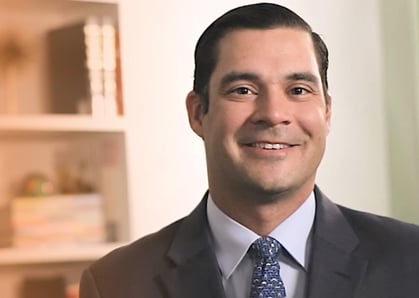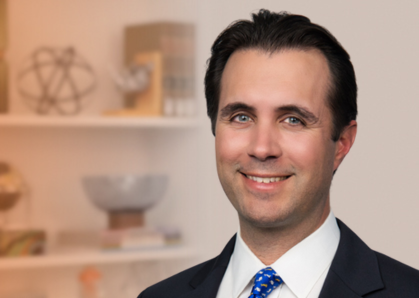Episode 4: Moving Upriver: The Story of Adaptive Reuse along the Miami River
Javier Aviñó, Practice Group Leader for Bilzin Sumberg’s Land Development & Government Relations Group, and Anthony De Yurre, Partner in Bilzin Sumberg’s Land Development & Government Relations Group, discuss the major developments happening along the Miami River. They cover Miami’s origins along the river, how the character of adjacent developments and its usage have changed over time, and the growing diversity of uses taking place on its banks while maintaining its environmental integrity.
Transcript:
DE YURRE: Hello everyone. I'm Anthony De Yurre. I'm a partner in Bilzin Sumberg's Land Development & Government Relations Group. I'd like to welcome you to Bilzin Sumberg's interview series, Old Structures, New Purpose: Mastering the Practice of Adaptive Reuse. In this series, we explore this timely and salient issue from both the business and legal perspective.
Today, I have the pleasure of speaking with Javier Aviñó, the Practice Group Leader of Bilzin Sumberg's Land Development & Government Relations Group. We have the pleasure of speaking with Javier in regards to one of the iconic areas of Miami, the Miami River; Javier, thank you for being with us today.
So the Miami River. The city was founded on it. The city wouldn't exist without the river, and it is centrally located. It's bounded by Downtown Miami to the North, Brickell to the South. In fact, it is the dividing line between Brickell and Downtown Miami. But people don't look at these areas as a singular neighborhood, so to speak. They all have their unique character and individual traits. And along with that, the influx of development dollars have changed over time. We're seeing more of it now go into areas along the river in both commercial and residential developments.
We're very lucky to have you here with us today, as you have been involved in some of the most important developments of recent memory on the Miami River. So thank you for joining us in regards to your experience as you are uniquely capable of addressing this topic. Javier, Miami might be best known for its beaches, but the Miami River is very central to the heartbeat of the city. Can you give us a brief orientation on the river and its history?
AVIÑÓ: Yeah, sure. So the river is actually often not the first thing that you think of when you think of Miami; as you said, Miami is surrounded by a lot of water and the Bay and Miami Beach are often the first things that you think of when you think of Miami. But the river has served a very important purpose in Miami's history since its founding. It runs from the mouth of the river, from the Bay, from the heart of Brickell, a very important area of our community. And it goes all the way through and transects several other communities that have their own unique character. And so the river is one of those elements that actually carries over to various communities and various uses. So it's very much a working waterfront. It prides itself on its industrial background and its industrial character. And at the same time, based on its geographic location, there's a variety of other active uses, residential uses, commercial uses. And so it lends itself to a real mixed community.
DE YURRE: And so how have development trends evolved over time here. Has it become a place where developers are now focusing on the opportunities for pipeline, maybe this is the new waterfront of the future. Now that the Bay Waterfront is pretty much developed out.
AVIÑÓ: Yeah. So there's always been a push and pull if you will, with the river because of the need and desire to preserve the industrial character and the industrial uses. I mean, there are certain industrial uses- Marina-related and Marine-related- where they're working on large vessels and really the river serves as the best place to continue to house those uses. And so oftentimes there's again a push and pool with that. And residential and commercial uses, they don't always lend themselves to being the best of neighbors. And so trying to find that balance between keeping and supporting those industrial uses that are so important while at the same time allowing for adaptive reuse of some structures for commercial uses, such as restaurants and other food and beverage outlets as well as residential components, hotel and lodging components, is something that's critical to the success of the river and the future of the river.
DE YURRE: What types of uses do you see as in demand for the Miami river and in that regard, how do you see developers meeting those demands through adaptive reuse.
AVIÑÓ: The river as we talked about really connects all the way almost from the airport all the way down to the Bay. And so the use of watercraft to get to and from adds another element versus just your traditional modes of transportation, like a car. It's important to offer the ability to have some food and beverage outlets, have lodging. Those are the uses that I think are going to be more prevalent as we move forward, because they're a natural connector to some of the existing uses. Again, the marinas that are on the river are working marinas, but they also serve private watercraft of folks that want to be able to hop on and off their vessels and be connected to other uses along the river.
DE YURRE: Are there special environmental or zoning concerns that developers should be aware of specifically? If they're targeting the Miami River area for purposes of their newest project.
AVIÑÓ: Absolutely. I mean, the environmental items that one needs to think about and evaluate are probably more prevalent in the river. There is a manatee protection plan. There's a limitation of the number of vessels that one can have. There's a desire by many to be able to add additional marine uses as an ancillary use to perhaps either the food and beverage outlet or the commercial use or even the residential use. And it's important to evaluate what one can actually put based on the regulatory framework behind the manatee protection plan, as well as the existing industrial uses. There's also a series of bridges that transcend the river and understanding and knowing that activity in conjunction with what your proposed use is critical to the success of a project.
DE YURRE: So it sounds like it's not just what's in the book. You do need to really understand how to balance the interests of the working river with the development, and that's where your experience on these specific projects has come into hand.
AVIÑÓ: Absolutely. The river has additional regulatory agencies and oversight, including for instance, the Miami River Commission, in addition to the City of Miami, and Miami-Dade County's Department of Environmental Resources. So there are a series of agencies that all have a different regulatory framework and a different regulatory look that they take at any proposals that happen along the river.
DE YURRE: Javier given the changes we've seen along the Miami River, what do you think the future holds? Let's say we look out 10 years from now. We can look back. How do you think that interests will be balanced? What does the future of the Miami River look like to you in your mind?
AVIÑÓ: Yeah, I think you're going to continue to see a profound interest in redevelopment on the river. And again, balancing the existing important industrial working waterfront uses with adding a healthy balance of other uses is something that I think we're going to continue to see. I think we're going to see an interest in adding a different dimension to the river than we've seen before. I think having new uses come in and connecting those uses vis-à-vis a walkability. River landing, as an example is a newer development that came through. That has a mix of uses. It has office uses and retail uses, food and beverage uses, as well as residential and the building that they have there really compliments the river. And as an ode to the river, the landscape, the working waterfront that they have with respect to the walkway is something that I think will continue to be added to as new uses come in. And so it will add a new dimension to the river.
DE YURRE: And that's the project, the River Landing project, a project that you worked on intimately here at Bilzin Sumberg. A lot of outside of the box thinking was required to get that accomplished. I think that that experience is definitely invaluable in future opportunities for redevelopment.
AVIÑÓ: And it's a great example of a project that is immediately adjacent to another project that the firm and I worked on: the Merrill Stevens adaptive reuse, an existing, very important, very critical industrial development that really has transformed into a state-of-the-art use and is immediately adjacent to the River Landing project. And they work very well together. And so again, finding the balance between the importance of the industrial working waterfront with the need for the new residential commercial office uses is something that can be thoughtfully done and accomplished.
And in my mind, it just adds to the character of the river. It's what makes this a unique neighborhood in Miami and very desirable, not just from the standpoint of a potential developer, but from the standpoint of commercial and residential users of the Miami River.
DE YURRE: Javier, thank you very much for joining us. That was really an excellent overview of where we come from as a city around the Miami River, where we are today, and where we can move to in the future and balancing all the interests that are involved in the river.
So thank you again for joining us today on another episode of our interview series. We look forward to bringing you the next episode of our interview series, Old Structures, New Purpose: Mastering the Practice of Adaptive Reuse.





